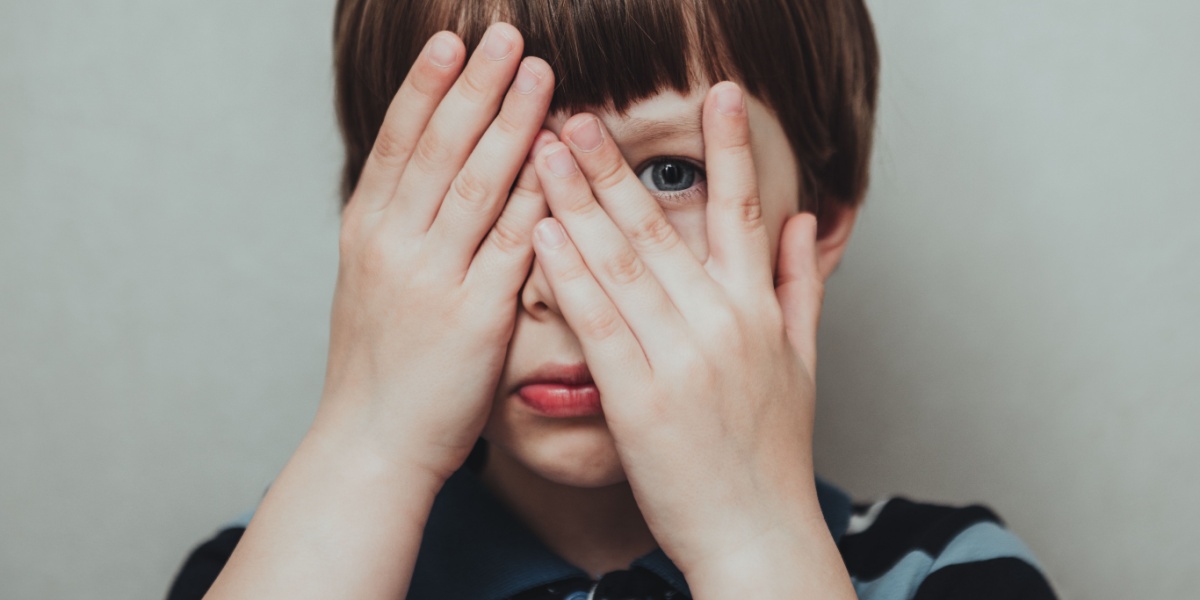Causes of Childhood Disorders
Childhood is a crucial stage of development where emotional, physical, and cognitive growth occur rapidly. It is also a time when early signs of mental health challenges may appear. If these issues go unnoticed or untreated, they can impact a child’s development, relationships, and future well-being.

Supporting children during this time is vital to helping them build resilience and thrive. Understanding the types and causes of childhood mental health disorders is essential for early detection and intervention. With proper care, children can manage challenges effectively and grow into emotionally healthy, well-adjusted adults. Early support truly makes a lasting difference.
Neurodevelopmental Disorders in Children
These disorders primarily affect how the brain develops and functions, influencing behavior, learning, and social interactions. Early detection is vital to helping these children live happy and fulfilling lives. However, it is essential to note that these disorders usually appear in early childhood and can continue throughout a person’s life [1].
Attention-Deficit/Hyperactivity Disorder (ADHD)
One of the most well-known childhood disorders, which affects 6-9% of school-going children worldwide, is ADHD, which involves a pattern of inattention, hyperactivity, and impulsive behavior that interferes with functioning and development [2].
ADHD symptoms include difficulty focusing during tasks, frequent item loss, a lack of organizational skills, restlessness, and excessive talking. Children may interrupt conversations or act without thinking about the consequences.
Effective ADHD management strategies include behavioral therapy, parent training programs, classroom accommodations, and, when needed, medication such as stimulants or non-stimulant alternatives [3].
Autism Spectrum Disorder (ASD)
Autism Spectrum Disorder is present in many different ways and on a wide scale. Some children present complex challenges, while others only need minimal support. Experts describe ASD as a developmental condition that is very complex. It affects how children communicate, their social interactions, and their behavior.
Children with ASD often have specific interests and dive into them headfirst. They also have increased sensitivity to sensory intakes. Children with this disorder may also avoid eye contact, engage in repetitive behaviors (such as hand flapping), and struggle to understand social cues.
Speech therapy, occupational therapy, and mental health therapy are some interventions that can assist children with ASD to cultivate the skills needed to improve their quality of life [4].
Learning Disabilities
Learning disabilities affect academic merit regardless of normal intelligence levels. Some examples would be dyslexia (reading difficulty), dyscalculia (difficulty with math), and dysgraphia (writing difficulties).
Children with learning disabilities may read at a slower pace, struggle with basic arithmetic, or have difficulty forming coherent written sentences. Specialized instruction, tutors, and assistive technology have helped children with learning disabilities achieve academic accomplishments.
Behavioral Disorders in Children
If left unattended, behavioral disorders can cause tense interpersonal connections and obstruct a child’s social development. The symptoms can be described as patterns of inappropriate or disruptive behavior that primarily affect daily life.
Oppositional Defiant Disorder (ODD)
Around 3% of children are affected by ODD, and it is known to cause chronic defiance, irritability, and contentious behavior toward authority [5].
ODD children may have frequent arguments with parents or teachers, avoid following rules, and annoy others on purpose. This then interferes with both their home and school environments.
Mediation of ODD involves child-parent interaction therapy, social-emotional skill-building, and routines with structure.
Conduct Disorder (CD)
Conduct Disorder is characterized by more serious behavioral issues, such as aggression, deceit, and not following rules. Young adults are more affected than younger children.
Children with CD present signs of physical aggression, bullying, stealing, and, in some cases, property damage. Children with this condition frequently demonstrate a lack of empathy and show little remorse for their actions.
Treatment of conduct disorder typically requires a combination of counseling, family-based therapy, and intervention from teachers and schools.
Anxiety Disorders in Children
Up to 7% of the world’s population is made up of children who suffer from mild to debilitating anxiety disorders, which affect their ability to participate in everyday activities [6].
Separation Anxiety Disorder
Separation anxiety disorder is more common among younger children. These children suffer from an extreme fear of being separated from their parents or caregivers.
Children with separation anxiety disorder often complain about physical symptoms such as headaches and nausea when they think about being separated from their primary support system. They are also extremely clingy and prefer to avoid school if given the chance to.
Social Anxiety Disorder
This disorder is more commonly seen in younger adults, who have a fear of being judged and humiliated when they are out in public.
The symptoms of social anxiety disorder include struggling to form meaningful relationships with others, combined with extreme bouts of anxiety and self-consciousness.
Generalized Anxiety Disorder (GAD)
Children who suffer from Generalized Anxiety Disorder (GAD) tend to worry about all aspects of their lives. This can include their academics, well-being, social circles, and family relationships.
Children with GAD exhibit signs of irritability and often come across as fidgety and irritable. Additionally, they have trouble sleeping and or experience muscle tension. In extreme cases of anxiety, medication can be used to help relieve some of the symptoms. Other treatments include cognitive-behavioral therapy (CBT) and being taught mindfulness techniques.
Mood Disorders in Children
Children with mood disorders find it challenging to manage everyday tasks, relationships, school, or any other situation that may affect their emotional state.
Depression
Children who suffer from depression go through long periods of sadness or irritability, often combined with extreme feelings of worthlessness. They usually start to lose interest in all the activities that they once enjoyed and took part in. They also tend to shy away from social gatherings, have trouble sleeping, and experience changes in their appetite. In extreme cases, they may even have suicidal thoughts.
Bipolar Disorder
While bipolar disorder is more commonly seen in adults, children may begin to show early symptoms. Bipolar disorder causes intense mood swings, manic episodes, and depression.
Symptoms include impulsiveness, bad decision-making skills, extreme sadness, and fatigue. Sudden bursts of energy and euphoria follow this before entering back into a depressive state.
Treatment of mood disorders usually involves therapy, lifestyle adjustments, and medication to help alleviate any physical and emotional symptoms.
What Causes Childhood Disorders?
The question that parents and caregivers often ask is what causes these disorders in children. However, many factors come into play. These include:
Genetic Influences
Genetics can be a cause of several anxious and depressive disorders, and a child has a higher risk of developing any one of them if there is a history of mental illness in the family.
Environmental Factors
Poverty, limited access to healthcare services, negative social interactions like bullying, and traumatic childhood experiences can contribute to childhood disorders.
Family Dynamics
Family dynamics can also be a potential cause. This includes situations of neglect, sporadic discipline, or a history of family abuse. This is especially true if a child is witness to one of their parents’ mental health problems.
Biological and Prenatal Factors
Expectant mothers who experiment with drug use or have stress during their pregnancy are more likely to give birth to children with a mental health condition. However, they can also be caused by childbirth and labor complications that can affect the development of the brain.
Early Signs and Symptoms of Childhood Disorders
Parents and caregivers must look out for any warning signs of childhood mental health disorders in their children. The sooner these symptoms are recognized, the sooner they can look for professional help. These include:
- Mood swings and irritability.
- Children who battle to concentrate or complete simple tasks.
- Avoidance of friends and family.
- Physical complaints, such as headaches and stomachaches, without any apparent medical reason.
- A decline in academic performance or refusal to go to school.
Diagnosing Childhood Disorders
Professionals need to conduct several assessments to diagnose childhood disorders. These assessments, which experts view as part of a comprehensive approach, include:
- Observation: Parents, teachers, and caregivers need to observe the child so they can provide health professionals with information on the child’s behavior both at home and at school.
- Psychological testing: Standard questionnaires are often used to assess the child’s emotional and cognitive function.
- Medical evaluation: Before a diagnosis can be given, children need to undergo a physical examination to rule out any underlying health problems.
- Collaboration: Collaboration among families, teachers, and mental health practitioners is needed to understand better and determine a child’s needs.
Treating Childhood Disorders
Each child is unique, and treatment will depend on their individual needs. Treatment plans often include the following:
- Therapy: Both individual therapy and family therapy can help the child and their family understand their emotional and behavioral struggles. A common therapeutic intervention that is recommended is cognitive behavioral therapy.
- Medication: Medication may be used to help manage hyperactivity, anxiety, or depression.
- Structure: Children will be given coping mechanisms that include routine, skill-building, and positive reinforcement.
How to Support Children with Mental Health Disorders
Supporting children with mental health disorders requires a collaborative approach that involves the home, school, and broader community. Each environment plays a critical role in ensuring children feel understood, safe, and empowered to manage their emotions.
At Home
Creating a supportive and nurturing home environment is vital for a child’s mental well-being. Parents and caregivers should:
- Foster open communication: Encourage children to express their feelings without fear of judgment. Active listening helps build trust and makes children feel valued and understood.
- Maintain consistency and structure: Predictable routines provide a sense of security and help reduce anxiety, particularly in children who may struggle with emotional regulation.
- Promote healthy habits: Ensure children eat nutritious meals, engage in regular physical activity, and get sufficient sleep. These factors significantly impact emotional and psychological resilience.
At School
Schools are essential partners in supporting children’s mental health. Educators can help by:
- Implementing support plans: Use tools like Individualized Education Programs (IEPs) and 504 Plans to accommodate students’ emotional and academic needs effectively [7].
- Training and awareness: Teachers should be educated on the signs of mental health challenges so they can recognize when a student may need extra attention or intervention.
- Encouraging peer inclusion: Fostering inclusive classrooms where all students feel welcome can improve social skills and self-esteem among children with mental health concerns.
In the Community
Community support can extend the resources available to families and foster a culture of mental health awareness:
- Access to services: Local organizations and healthcare providers can offer counseling, support groups, and educational workshops tailored for children and families.
- Advocacy and awareness: Community leaders and institutions should promote mental health awareness campaigns, reducing stigma and encouraging early intervention and treatment for children showing signs of distress.
A united effort from all areas of a child’s life creates a strong foundation for healing, growth, and lifelong well-being.
Final Thoughts
Parents, caregivers, and teachers can play a direct role in helping children overcome the obstacles that are often associated with mental health issues. Early detection, support, and management have the potential to help these children reach their full potential. This collaboration can ensure that every child is allowed to blossom, regardless of the challenges they face.
- Scott, J.G., Mihalopoulos, C., Erskine, H.E., Roberts, J., & Rahman, A. (2016). Childhood mental and developmental disorders. Disease Control Priorities, Third Edition (Volume 4): Mental, Neurological, and Substance Use Disorders, 4(4), 145–161. https://documents.worldbank.org/en/publication/documents-reports/documentdetail/841781467995046626/mental-neurological-and-substance-use-disorders. Accessed May 23 2025.
- Salari, N., Ghasemi, H., Abdoli, N., Rahmani, A., Shiri, M. H., Hashemian, A. H., Akbari, H., & Mohammadi, M. (2023). The global prevalence of ADHD in children and adolescents: a systematic review and meta-analysis. Italian Journal of Pediatrics, 49(1). https://pmc.ncbi.nlm.nih.gov/articles/PMC10120242/. Accessed May 23 2025.
- Centers for Disease Control and Prevention (CDC). (2024). Parent training in behavior management for ADHD. [Online] Attention-Deficit / Hyperactivity Disorder (ADHD). https://www.cdc.gov/adhd/treatment/behavior-therapy.html. Accessed May 23 2025.
- Autism Speaks. (2021). Applied behavior analysis (ABA). https://www.autismspeaks.org/applied-behavior-analysis. Accessed May 23 2025.
- Anxiety Treatment NYC. (n.d.). Oppositional defiant disorder (ODD). https://www.anxietytreatmentnyc.org/odd.cfm. Accessed May 23 2025.
- Erskine, H.E., Baxter, A.J., Patton, G., Moffitt, T.E., Patel, V., Whiteford, H.A., & Scott, J.G. (2016). The global coverage of prevalence data for mental disorders in children and adolescents. Epidemiology and Psychiatric Sciences, 26(4), 395–402. https://www.cambridge.org/core/journals/epidemiology-and-psychiatric-sciences/article/global-coverage-of-prevalence-data-for-mental-disorders-in-children-and-adolescents/44C6D46C01BB20671CF8514FEDF76E56. Accessed May 23 2025.
- Rawe, J. (2022). IEP vs. 504 plan: What’s the difference? Understood.org. https://www.understood.org/en/articles/the-difference-between-ieps-and-504-plans. Accessed May 23 2025.
The Clinical Affairs Team at MentalHealth.com is a dedicated group of medical professionals with diverse and extensive clinical experience. They actively contribute to the development of content, products, and services, and meticulously review all medical material before publication to ensure accuracy and alignment with current research and conversations in mental health. For more information, please visit the Editorial Policy.
We are a health technology company that guides people toward self-understanding and connection. The platform provides reliable resources, accessible services, and nurturing communities. Its purpose is to educate, support, and empower people in their pursuit of well-being.
Carrie Steckl, Ph.D. is a writer with experience as a non-profit professional, college instructor, mental health clinician, and Alzheimer's advocate.
Morgan Blair is a licensed therapist, writer and medical reviewer, holding a master’s degree in clinical mental health counseling from Northwestern University.
Further Reading
The Clinical Affairs Team at MentalHealth.com is a dedicated group of medical professionals with diverse and extensive clinical experience. They actively contribute to the development of content, products, and services, and meticulously review all medical material before publication to ensure accuracy and alignment with current research and conversations in mental health. For more information, please visit the Editorial Policy.
We are a health technology company that guides people toward self-understanding and connection. The platform provides reliable resources, accessible services, and nurturing communities. Its purpose is to educate, support, and empower people in their pursuit of well-being.


